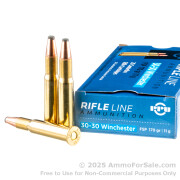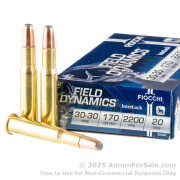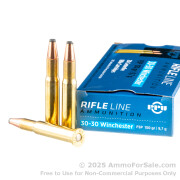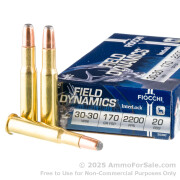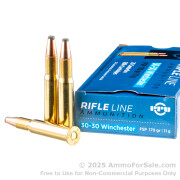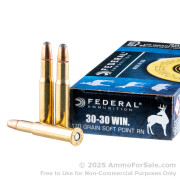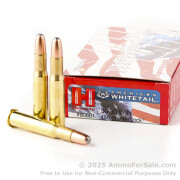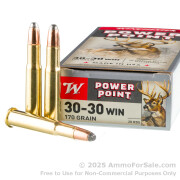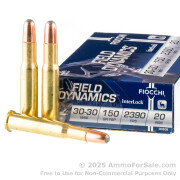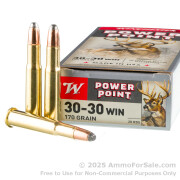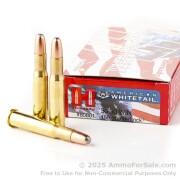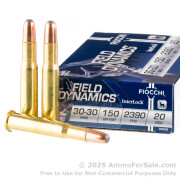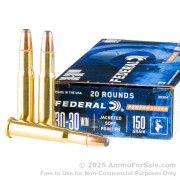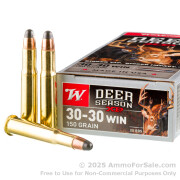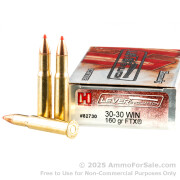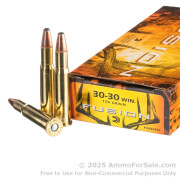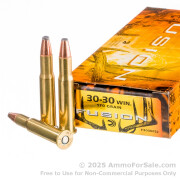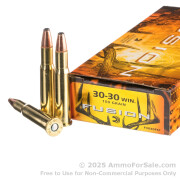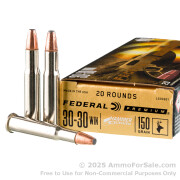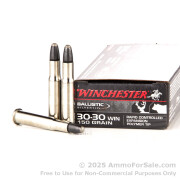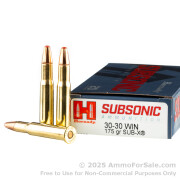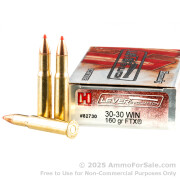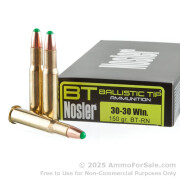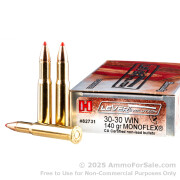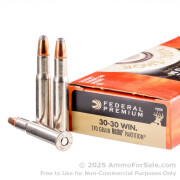30-30 Win Ammo For Sale
-
17 ready to ship
-
17 ready to ship
-
14 ready to ship
-
73 ready to ship
-
30 ready to ship
-
11 ready to ship
-
22 ready to ship
-
8 ready to ship
-
16 ready to ship
-
8 ready to ship
-
121 ready to ship
-
96 ready to ship
-
16 ready to ship
-
15 ready to ship
-
10 ready to ship
-
34 ready to ship
-
37 ready to ship
-
2 ready to ship
-
3 ready to ship
-
3 ready to ship
-
86 ready to ship
-
63 ready to ship
-
73 ready to ship
-
68 ready to ship
-
89 ready to ship
-
89 ready to ship
-
28 ready to ship
-
107 ready to ship
- Info
The 30-30 Win is a classic American round. Introduced in 1895 as the first small-bore rifle cartridge designed for smokeless powder, the 30-30 has remained a popular choice among hunters to this day.
A 30-30’s muzzle velocity falls in the the low to middle 2,000 range, and its bullet usually weighs 150 or 170 grains. This means the 30-30 is typically effective up to distances of 150 to 200 yards. It is not suitable for long-range hunting, but for hunting in the woods where trees make sniping impossible anyway, the 30-30 is an excellent choice. The 30-30 is frequently used by deer and black bear hunters throughout the country.
The 30-30’s recoil is weaker than many other popular hunting rounds. Its average recoil energy is approximately 70 percent that of a 30-06, and 60 percent as powerful as a 308 Win. Exactly how much recoil a shooter experiences is difficult to measure, but hunters do enjoy the 30-30’s relatively comfortable performance.
The 30-30’s lower muzzle velocity also leaves its bullet unlikely to deform. Even an accessibly priced 30-30 cartridge will deliver good accuracy as its bullet retains its streamlined form. The 30-30’s ballistic performance may fall short of newer rounds, but there are advantages to being on the smaller side, too!
Bolt-action rifles chambered for 30-30 are rare, and because it is a rimmed cartridge it would not work well in a semi-auto. Most 30-30 rifles are lever-action, with tubular magazines. It is common for a 30-30 bullet to have a flat tip for this reason: A pointed (i.e. spitzer) bullet can ignite the primer on the round it touches inside of a tubular magazine.


 Loading, please wait...
Loading, please wait... 